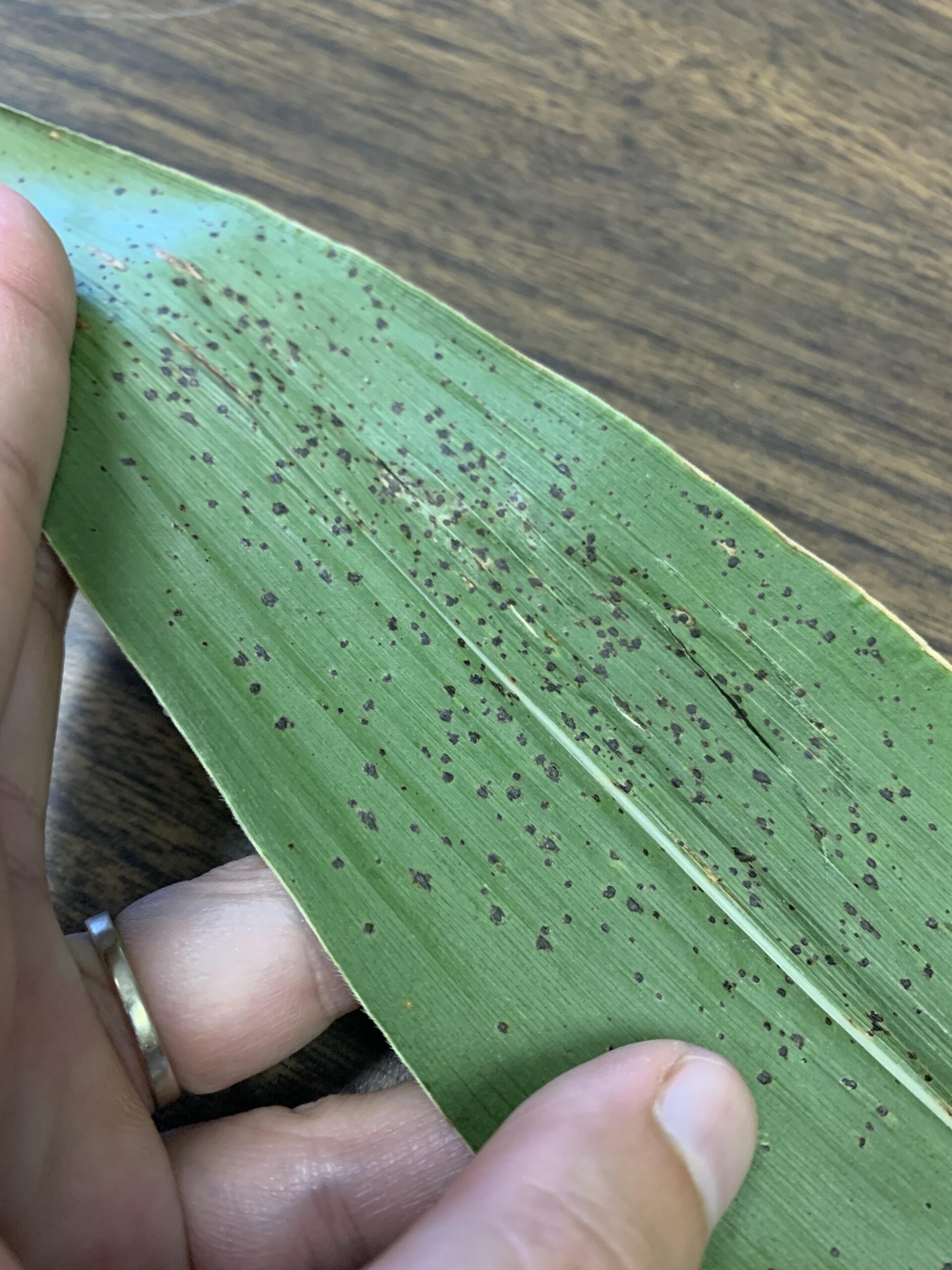
Corn Tar Spot. Photo Credit: Alyssa A. Collins, Penn State.
The presence of Corn Tar Spot (Phyllachora maydis) has been confirmed in New Jersey. Laboratory examination of a corn sample from New Jersey revealed the presence of tar spot. Tar spot is a foliar disease of corn that commonly occurs throughout Mexico, Central America, South America, and the Caribbean. The disease was identified in the United States for the first time in 2015 in northern Illinois and Indiana. Tar spot is caused by the fungus Phyllachora maydis and can cause severe yield loss on susceptible hybrids. In the Midwest severe tar spot outbreaks have been reported to reduce yield by more than 60 bushels per acre. It has also been observed that stalk rot and lodging are increased when tar spot severity is high. Corn at any developmental stage is susceptible to infection by the tar spot fungus when conditions are favorable. Tar spots appear as small, raised, black spots scattered across the upper and lower leaf surfaces. The pathogen that causes tar spot overwinters on infested corn residue on the soil surface, and it is thought that high relative humidity and prolonged leaf wetness favor disease development. You can diagnose corn tar spot in the field by examining corn leaves for the presence of black, tar-like spots. In the United States tar spot has been observed mostly during mid- to late grain fill (growth stages R3-R6) on leaves below or near the ear leaf.
Understanding and management of this disease in the United States is limited because of its very recent history. Management practices that may help reduce tar spot development and severity include the following:
Residue Management – In order to reduce over wintering inoculum, tilling and burying residue is recommended to promote decomposition of crop residue.
Crop Rotation– This helps reduce primary inoculum. We are still learning about the length of time to rotate out of corn.
Variety Selection – Avoid varieties that are or may be susceptible to tar spot.
Fungicides – The use of fungicides is still developing in the management of this disease. Several fungicides have been identified with efficacy on tar spot. Some of these products have 2ee labels that are not applicable in all states. Data on timing of application, effectiveness and economic returns are still being developed.
